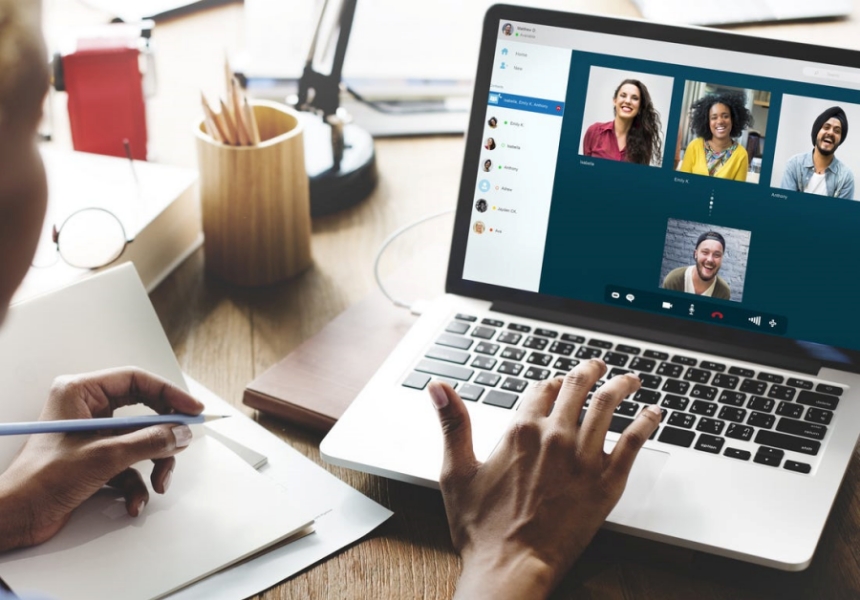How to get the most out of online events and conferences
Online events and conferences are popping up everywhere. Since many of us usually attend professional networking and in-person learning events, remote events can be complicated – and these occasions may seem less productive.
How do you connect with people through a webinar platform? How can you prioritize a virtual event that competes with meetings, emails, and rush projects? Once you’ve learned how to do it right, attending an online event can be just as useful as a professional development training or an in-person networking opportunity.
You are probably very familiar with webinars and e-learning courses, which allow you to participate in presentations and educational sessions from anywhere, often for free. Today, more and more professional conferences are taking place online and are becoming more and more sophisticated and attractive. Depending on the conference platform, you can log into a portal (or lobby), find networking rooms online, visit a virtual trade fair, and attend numerous professional development and information sessions, all from your computer.
But before you register or participate in an online conference, you should know how to approach this opportunity. Here are five key tips.
1. Block your time
Block out the time before and after an event so you don’t have to rush from one appointment to the next, and you will have time to learn about the characteristics of the event and make contacts with participants. If the event or conference runs all day, block your calendar for the entire duration. It’s also a good idea to let your manager and team know that you are treating this conference like a face-to-face conference, and to write an automatic out-of-office reply, asking a colleague to be your backup contact. And if an urgent and unavoidable project or meeting arises, plan to watch session recordings on demand so you don’t miss it completely.
2. Explore the opportunity
Before attending a virtual event or online conference, find out about all they have to offer. Many of these conferences will offer a variety of content options, such as presentations, workshops, panel discussions or question and answer forums open to participants. Distinguish between programs you want to watch live to chat with the presenter and attendees, and those you can watch on demand later. Can you get continuing professional education (CPD) credits for any of these sessions? Are slides or other material available before or after the presentation? Learn as much as possible so you can prepare ahead of time.

3. Participate in content
It can be difficult to pay attention to someone talking to you indirectly through a screen, while you are sitting at your desk and messages are reaching you in your inbox. To help you get closer to content and follow conference etiquette, turn off email notifications and put your phone on silent to avoid distractions. Take notes and participate in the discussion by asking questions during the question-and-answer session or by sharing challenges or experiences as part of the large group discussion. You can also ask a colleague or two to join you for a 15-minute debrief after the presentation to discuss key points and take-away points.
If the event has a tradeshow or virtual showroom, spend some time browsing it. Companies that exhibit in virtual kiosks offer a wide range of content, including videos, studies, documents, links to websites and sometimes even prizes and games. Depending on the platform, you can also chat one-on-one with a live representative, which is a great networking opportunity (and touches on our next tip).
4. Network with participants
You might not believe it, but it can be just as easy to network at online events as it is at in-person events. You cannot comment to the person sitting next to you during a presentation, but you can directly message someone who has asked a particularly interesting question during a webinar or Q&A forum or arrange meetings with them in a virtual meeting room.
If the conference or webinar platform does not provide these built-in networking capabilities, take note of a potential contact’s name and follow up with them on LinkedIn. You now have something in common with the people attending the event online, so it should be easy to make a connection.
5. Determine your takeaways
After attending an online or virtual event, think about the benefits it can bring to your career or business. What leadership tips from the speaker can you incorporate into your management style? How can you apply new industrial strategies to your current operational challenges? If you think your team or colleagues might benefit from what you’ve learned as well, ask if they’d like to receive an email with detailed notes.
Professional development time is always time well spent, whether in person or virtual. Now you will know how to approach online conferences and take full advantage of the educational and networking opportunities available.




